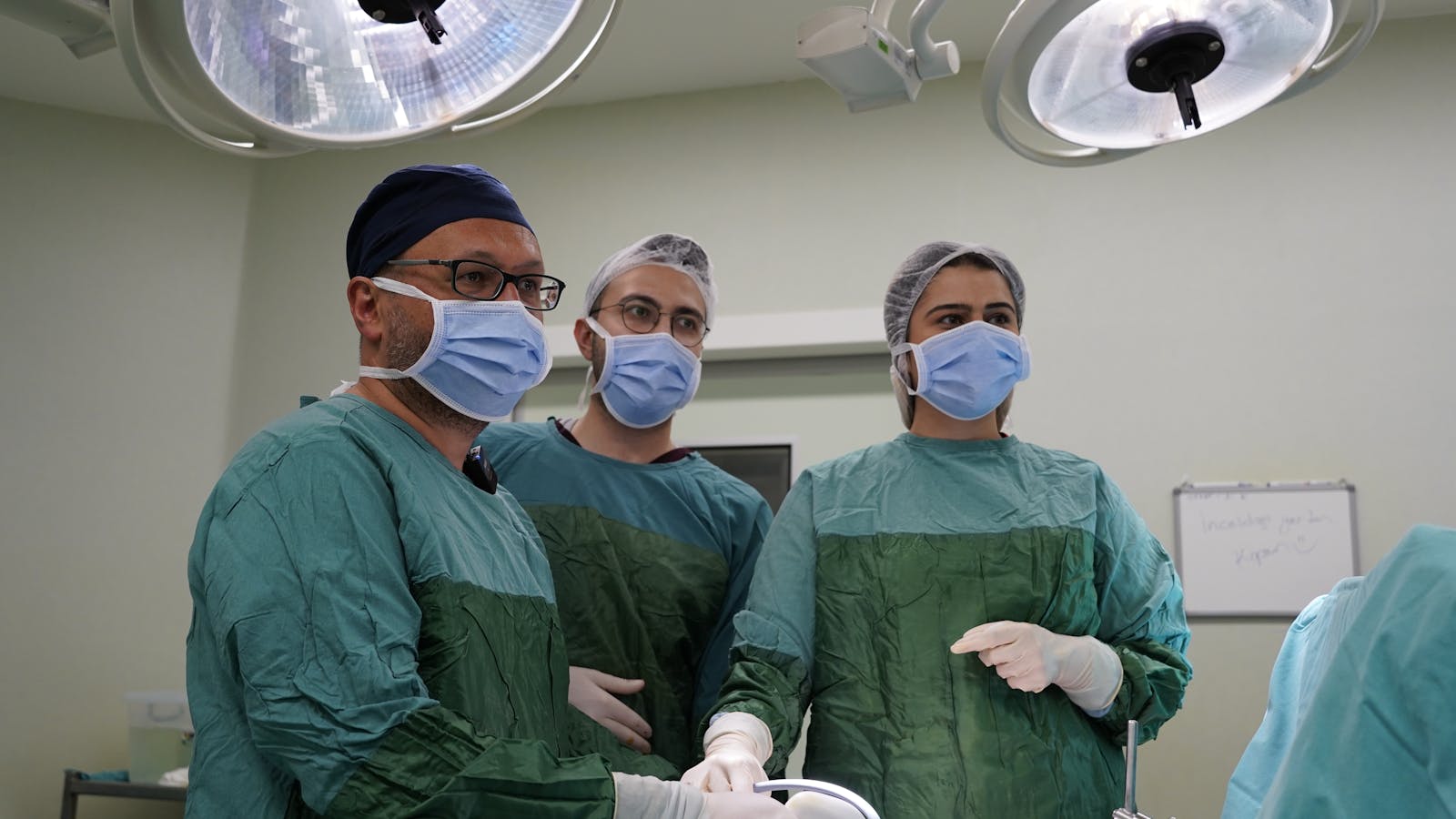Minimally invasive spine surgery offers significant advantages such as reduced trauma, less pain, quicker recovery, and lower infection risk due to smaller incisions and high-tech tools. However, its complexity can lead to higher costs and the potential for nerve damage. Traditional surgery, while requiring larger incisions, allows for a more thorough approach to spinal problems and increased procedure success rate. However, its disadvantages include substantial post-operative pain and longer recovery. Both surgeries have their own risks and benefits; understanding these can lead to an informed decision. Ultimately, the choice depends on individual patient condition and surgeon recommendations. Discover more by continuing your exploration.
Understanding Spine Surgery
Exploring the domain of spine surgery, understanding its fundamental nature and the various procedures involved is vital, laying the foundation for a more detailed conversation on minimally invasive versus traditional methods. This requires a basic understanding of spine anatomy and the factors that determine surgical candidacy.
Spine anatomy basics revolve around three essential components: vertebrae, discs, and nerves. Vertebrae are the building blocks of the spine, providing structural support. Discs, attached between each vertebra, act as shock absorbers, while nerves relay signals between the body and the brain. Diseases or injuries to these components often necessitate spine surgery.
The surgical candidacy evaluation is a critical process that determines whether a patient would benefit from spine surgery. It involves appraising the patient’s medical history, physical condition, and the severity of their spinal issue. The evaluation also includes considering non-surgical treatment options and their effectiveness for the patient’s specific condition.
Defining Minimally Invasive Surgery
In the domain of medical advancements, minimally invasive spine surgery has emerged as a revolutionary approach. This technique is designed to cause less trauma to the body compared to traditional methods, aligning with the growing patient expectations for safer and less painful medical procedures.
Minimally invasive surgery advancements have changed the landscape of spinal treatment. This approach involves making small incisions through which specialized instruments and a camera are inserted. The camera provides the surgeon with a magnified view of the surgical site, allowing for precision during surgery.
Key elements of minimally invasive surgery include:
- Small incisions: Unlike traditional surgery, this method requires smaller cuts, reducing physical trauma.
- Specialized instruments: Advanced tools are used to perform the surgery with precision.
- Camera usage: A camera guides the surgeon, offering a detailed view of the operation area.
- Reduced hospital stay: Due to less invasive techniques, patients often experience shorter hospital stays and faster recovery times.
The Benefits of Minimally Invasive Surgery
Minimally invasive spine surgery offers numerous advantages over traditional surgical methods, revolutionizing patient recovery and post-operative experiences. One of the key benefits is reflected in a surgery cost analysis. By reducing hospital stay duration and mitigating the risk of complications, minimally invasive surgery can meaningfully decrease the overall cost.
However, financial savings are not the only advantage; patient comfort levels are conspicuously enhanced. The smaller incisions made during minimally invasive procedures often result in less pain, reduced scarring, and quicker recovery times. This allows patients to return to their daily activities faster than they would following traditional surgery.
Furthermore, due to less disruption to the muscles and soft tissues, there can be less blood loss during surgery and a decreased chance of infection post-surgery. The use of state-of-the-art technology to perform these surgeries, such as endoscopes and robotic arms, also provides surgeons with a more precise view and control, leading to potentially better surgical outcomes.
Drawbacks of Minimally Invasive Surgery
While minimally invasive spine surgery offers many benefits, it is not without its drawbacks. These include increased complexity of the procedure, which can lead to potential complications. Additionally, this type of surgery may not be suitable for all spinal conditions, limiting its applications.
Increased Procedure Complexity
Despite the numerous benefits, one significant drawback of minimally invasive spine surgery is the increased complexity of the procedure. This complexity can influence several factors:
- Procedure cost: A more complex procedure can result in higher medical bills, as it often necessitates specialized equipment and expertise.
- Recovery time: While generally shorter than traditional surgery, recovery time may be extended if complications arise due to the procedure’s complexity.
- Training requirements: Surgeons must undergo extensive training to perform these procedures proficiently, which can limit their availability.
- Hospitalization duration: The complexity may also affect the length of hospital stay, potentially increasing costs and impacting the patient’s personal life.
Despite these challenges, many patients and doctors still prefer minimally invasive procedures for their numerous benefits.
Potential for Complications
Alongside the increased complexity previously mentioned, another notable disadvantage of minimally invasive spine surgery is the potential for complications. Complication statistics indicate that despite the advancements in surgical techniques, complications can still occur. These complications can range from minor issues such as skin infections to more serious problems like nerve damage or spinal fluid leaks. Patient experiences also highlight the possibility of postoperative pain and discomfort, which can extend recovery periods and impact quality of life. However, it is important to note that complications are not exclusive to minimally invasive procedures and can also occur in traditional surgeries. Nevertheless, the potential for complications in minimally invasive spine surgery is a factor that should be carefully considered when weighing treatment options.
Limited Surgical Applications
In addition to the potential for complications, minimally invasive spine surgery also presents limitations in its applicability to a range of spinal conditions. Despite surgical innovation, it may not be suitable for complex or multi-level spine disorders. There are four main limitations:
- Inability to adequately decompress severe spinal stenosis.
- Difficulty in securing unstable spinal segments.
- Limited utility in addressing spinal deformities like scoliosis.
- Reduced visibility may compromise the accuracy of surgery.
Postoperative care in these instances may be more challenging due to the inability to completely address the underlying issues. As a result, patients may require additional interventions. Hence, while minimally invasive techniques have their advantages, their application is not universal.
Overview of Traditional Spine Surgery
Traditional spine surgery, often recognized as an open surgery, involves a substantial incision to expose the entire operative area. This approach provides the surgeon with a clear view and unrestricted access to the vertebrae and surrounding tissue, which can be vital for complex procedures. Remarkably, the evolution of surgical tools has played a significant role in the development of this surgery type, offering surgeons precision instruments that facilitate effective treatment of spinal disorders.
However, traditional spine surgery is not without its implications. The significant incision required can lead to substantial post-operative pain and a longer recovery period. This can have a significant impact on the patient’s lifestyle, particularly in the initial stages of recovery. Patients may need to make considerable adjustments to their daily routines, including work schedules and physical activities. In certain cases, extensive physical therapy may also be necessary to regain full mobility and strength.
Pros of Traditional Spine Surgery
Traditional spine surgery, despite being more invasive, presents certain advantages worth considering. Its all-encompassing problem resolution refers to the surgeon’s ability to visually confirm and rectify the issue, which can lead to more precise treatment. Additionally, the long-term benefits of this approach, such as improved structural stability and potentially eliminating the need for additional surgeries, further underscore its relevance in the field of spinal treatment.
Comprehensive Problem Resolution
One of the significant advantages of traditional spine surgery is its ability for thorough problem resolution. Unlike some non-surgical alternatives, traditional surgery often offers a more all-encompassing solution, especially when dealing with complex spine conditions.
- The scope of traditional spine surgery allows for the complete removal of damaged tissue or bone, reducing problem recurrence rates.
- It provides a direct approach to the spine, facilitating thorough examination and treatment of the problem area.
- It enables surgeons to have a broader field of view and better control, which can increase the success rate of the procedure.
- It can be more beneficial for patients with severe or multiple spine issues, where non-surgical alternatives might not provide sufficient relief.
Long-Term Surgical Benefits
Beyond the immediate resolution of spine issues, the merits of conventional spine surgery extend to long-term benefits that may enhance patients’ quality of life. A significant advantage lies in post-operative mobility. Conventional surgery often provides a more definitive solution, thereby ensuring better and sustained mobility for patients.
Furthermore, although the upfront surgical costs may seem challenging, the long-term financial implications of traditional spine surgery could prove beneficial. The reason being, recurrent surgeries or extended rehabilitation often associated with minimally invasive techniques may be circumvented. Conclusively, traditional spine surgery can provide a more cost-effective solution in the long run, contributing to both physical well-being and financial stability for patients. The long-term benefits highlight the crucial role of traditional spine surgery in managing spinal disorders.
Cons of Traditional Spine Surgery
Despite its effectiveness, traditional spine surgery carries certain drawbacks that must be carefully pondered. To start with, postoperative pain is a significant concern. As a relatively invasive procedure, traditional spine surgery often results in substantial discomfort during the recovery phase.
Secondly, patients undergoing traditional spine surgery are left with notable surgical scars. These are not only aesthetic concerns, but can also cause discomfort and restrict movement.
Here are four additional disadvantages to ponder:
- Lengthy hospital stay: Traditional spine surgery usually requires a longer hospital stay compared to minimally invasive procedures, increasing the overall cost and disrupting personal life.
- Potential for complications: The invasive nature of the surgery increases the risk of complications such as infections or blood clots.
- Long recovery period: Patients often need several months to fully recover, which may involve extensive physical therapy.
- Risk of nerve damage: Given the complex nature of the spine, there’s a risk of accidental nerve damage during surgery, potentially leading to long-lasting issues.
Recovery Comparisons
In evaluating the recovery process, it is evident that minimally invasive and traditional spine surgeries present distinct timelines and challenges. The nature of these surgical approaches greatly influences postoperative mobility and the subsequent need for rehabilitation techniques.
Minimally invasive surgery often results in a shorter hospital stay and quicker return to daily activities. The smaller incisions generally lead to less tissue damage, which in turn results in less pain and a faster recovery. However, this does not eliminate the need for a structured rehabilitation program to restore strength and mobility.
Traditional spine surgery, on the other hand, often necessitates a longer recovery period. The larger incisions and more extensive tissue damage can lead to prolonged pain and limited mobility postoperatively. This requires a more intensive rehabilitation program to regain strength and function.
Regardless of the surgical approach, a thorough rehabilitation program is essential. These techniques should focus on improving mobility, strength, and overall function. A personalized approach, taking into consideration the unique needs and goals of each patient, is vital for an ideal recovery.
Risk Assessment: Minimally Invasive Vs Traditional
When comparing minimally invasive and traditional spine surgeries, it is important to weigh the potential risks associated with each procedure. Both surgical options come with inherent risks, but the extent and nature of these risks may differ.
Key areas of comparison include:
- Surgery cost comparison: Minimally invasive surgeries often cost more due to the specialized equipment and training required. However, they may result in shorter hospital stays and fewer complications, potentially reducing overall healthcare costs.
- Infection risk: Traditional spine surgery carries a higher risk of infection due to the larger incision size.
- Post operative pain management: Minimally invasive surgery typically results in less postoperative pain, reducing the need for pain medications.
- Risk of surgical complications: Traditional surgery involves a higher risk of complications such as blood loss or nerve damage.
Long-Term Outcomes: A Comparison
Beyond immediate risks and recovery, it is equally important to examine the long-term outcomes of both minimally invasive and traditional spine surgeries. Patient experiences often vary due to the different surgical approaches.
Minimally invasive procedures, due to smaller incisions, generally result in less post-operative pain and quicker recovery periods, leading to a more positive patient experience in the short-term. However, the complexity of some spinal conditions may necessitate traditional open surgery, which, despite its longer recovery period, can provide more thorough treatment and better long-term stability.
Surgical costs also play an important role in long-term outcomes. While minimally invasive surgery can be more expensive initially, due to the specialized equipment and training required, it often leads to shorter hospital stays and reduced overall healthcare costs. Traditional spine surgery, on the other hand, may have lower upfront operational costs but can potentially result in longer hospitalization and more extended physical therapy, increasing the total cost in the long run.
It is essential, therefore, to take into account long-term outcomes, patient experiences, and surgical costs when discussing the pros and cons of minimally invasive versus traditional spine surgeries.
Making Your Surgery Decision
Managing the decision-making process for spine surgery requires careful contemplation of multiple factors including the type of your spinal condition, risks, benefits, and potential outcomes of each surgical approach. This process can be intricate and sometimes overwhelming, yet it is crucial for ensuring the best possible outcome for your health.
Here are four key points to ponder while making your decision:
- Understanding the Spinal Condition: Know the specifics of your spinal condition and how it impacts your daily life. This will help you to acknowledge the importance of the surgery and its potential impact.
- Evaluating the Risks and Benefits: Weigh the potential risks and benefits of both minimally invasive and traditional spine surgery. Your surgeon can provide detailed information about these aspects.
- Considering Surgical Costs: Both types of surgeries come with their own set of costs. It’s imperative to contemplate these, along with the potential financial implications of post-operative care and recovery.
- Insurance Considerations: Check with your insurance provider about the coverage options for each type of surgery. This can greatly influence your decision, particularly regarding the financial burden.
Frequently Asked Questions
What Is the Average Cost Comparison Between Minimally Invasive and Traditional Spine Surgery?
The cost of minimally invasive spine surgery varies but is typically less than traditional surgery, due to shorter hospital stays and quicker post-operation recovery. However, surgery risks could potentially influence the overall cost difference.
How Does the Surgeon’s Experience Factor Into the Success Rate of These Procedures?
Surgeon training greatly influences the success rate of both minimally invasive and traditional spine surgery. Greater experience often leads to better outcomes. Post-operative care is also essential for effective recovery and long-term success.
Are There Specific Conditions or Circumstances Where One Type of Surgery Is Typically Preferred Over the Other?
The choice between surgical techniques often hinges on patient suitability and recovery timelines. Certain conditions may necessitate traditional surgery, while others could be effectively managed with minimally invasive procedures, depending on the patient’s overall health and recovery capacity.
How Often Does Insurance Cover Each Type of Surgery and Is One Typically More Accepted Than the Other?
Insurance policies vary widely, but both minimally invasive and traditional spine surgeries are usually covered. The approval for surgery is often dependent on medical necessity rather than the type of surgical procedure.
What Are the Psychological Impacts, if Any, of Undergoing Minimally Invasive Vs Traditional Spine Surgery?
The psychological impacts of spine surgeries can vary. Minimally invasive procedures may reduce post-operative anxiety and alter pain perception, potentially offering psychological benefits compared to traditional surgery. However, individual responses will differ based on personal factors.



